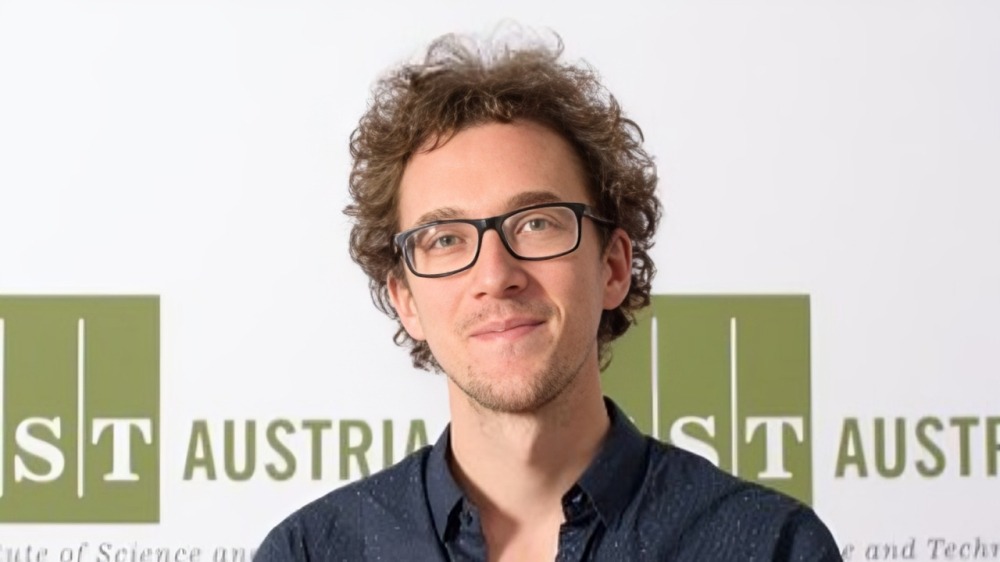Edouard Hannezo, Professor of Biophysics at IST Austria, shared her own post on X, adding:
“Now out in its final form, with a new title, ‘Mechanical control of cell fate decisions in the skin epidermis’ and simulations/quantifications!
See below for thread of how unbalanced tensions can bias fate choices in minimal 3D models of tissues/tumors!”
Title: Mechanical control of cell fate decisions in the skin epidermis
Journal: Nature
Authors: Preeti Sahu, Sara Monteiro-Ferreira, Sara Canato, Raquel Maia Soares, Adriana Sánchez-Danés, Edouard Hannezo
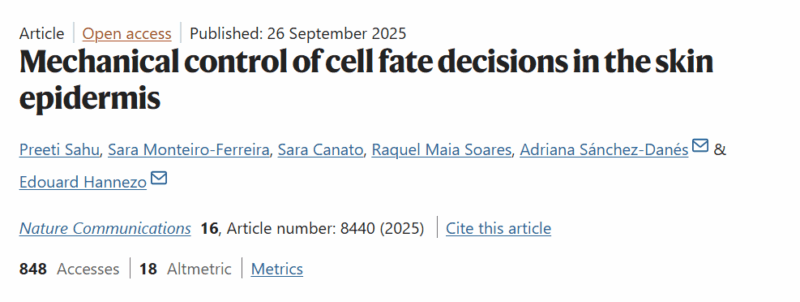
“Happy to share the latest work from Preeti Sahu, with Adriana Sánchez Danés on the biomechanics of cell fate choices during tumor initiation!
We implement/test a 3D vertex model with proliferation and fate choices for multilayered tissues!
Seminal work has shown how single cell fate is affected by different mechanical forces, but how are fate choices collectively balanced in complex multilayered tissues? To model skin, we start with a 3D vertex model with proliferation only in the basal cells.
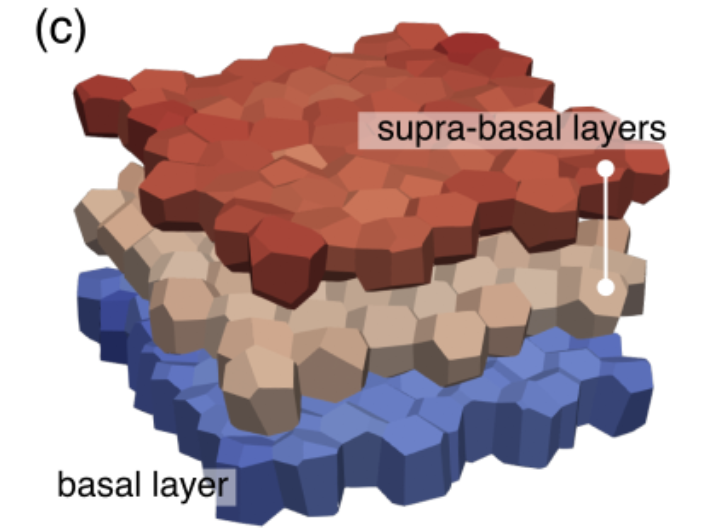
As expected, mechanics sets a threshold density so that upon divisions, cells start to stochastically delaminate to layers above. This recapitulates well the stochastic neutral drift dynamics seen in many lineage tracing experiments.
Although tissue rheology (e.g. liquid or solid) has little impact on average properties such as clone sizes, it was still be traced back to very different patterns of cell and clonal shape – something often discarded in lineage tracing experiments that needs to be reanalyzed!
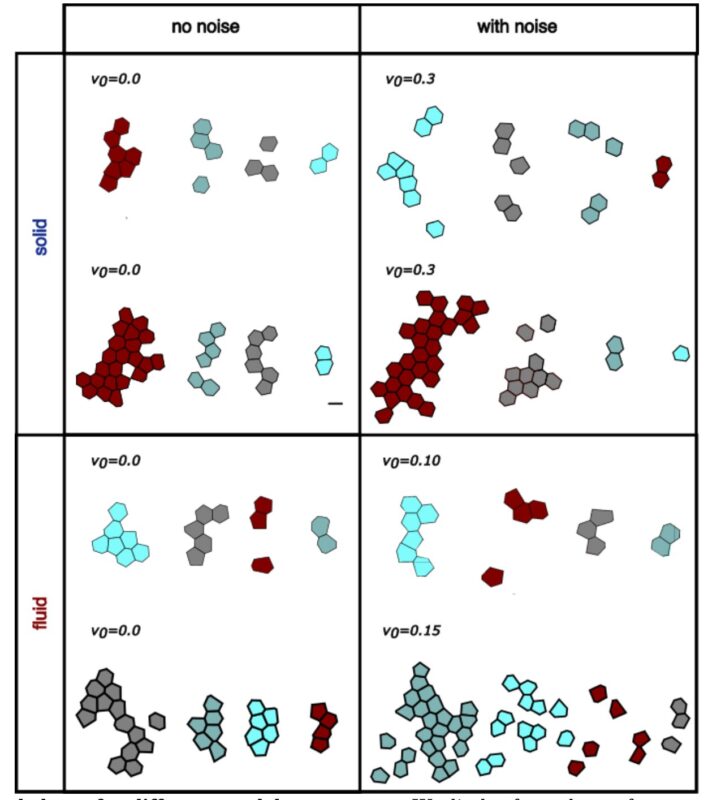
Then, we investigated tumor growth! Previous work with Adriana Sánchez Danés, Cedric Blanpain showed that tumors grow mainly due to unbalanced fate choices (with very specific/constant imbalance ratio) -rather that high prolif)! Could this be due to differential mechanical properties?
We realized that fate choices are extremely sensitive to imbalance in adhesions/tensions! If tumor cells have slightly higher basal adhesion, this gives their progeny them a slight advantage to stay in the basal layer, which is compounded in time!
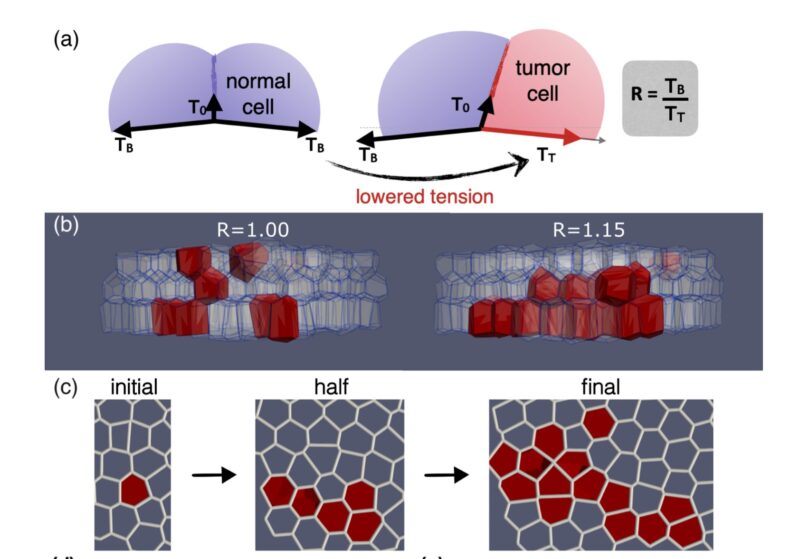
Crucially, imbalances in tension/adhesion should also be manifest in single cell morphometrics- meaning we can theoretically derive a master curve linking long-term fate outcomes from static cell morphometrics! Is this true in data?
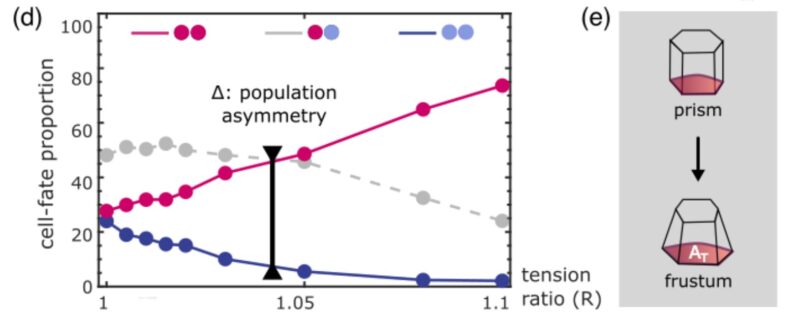
We performed oncogenic activation (basal cell carcinoma) and lineage-tracing in mouse epidermis – and measured tumor single cell morphometrics –> prism shapes consistent with enhanced basal adhesion – to a degree consistent with our prediction from previous fate oucomes!”

Title: Biomechanics of stem cell fate decisions in multilayered tissues
Journal: bioRxiv
Authors: Preeti Sahu, Sara Canato, Raquel Soares, Adriana Sánchez-Danés, Edouard Hannezo

